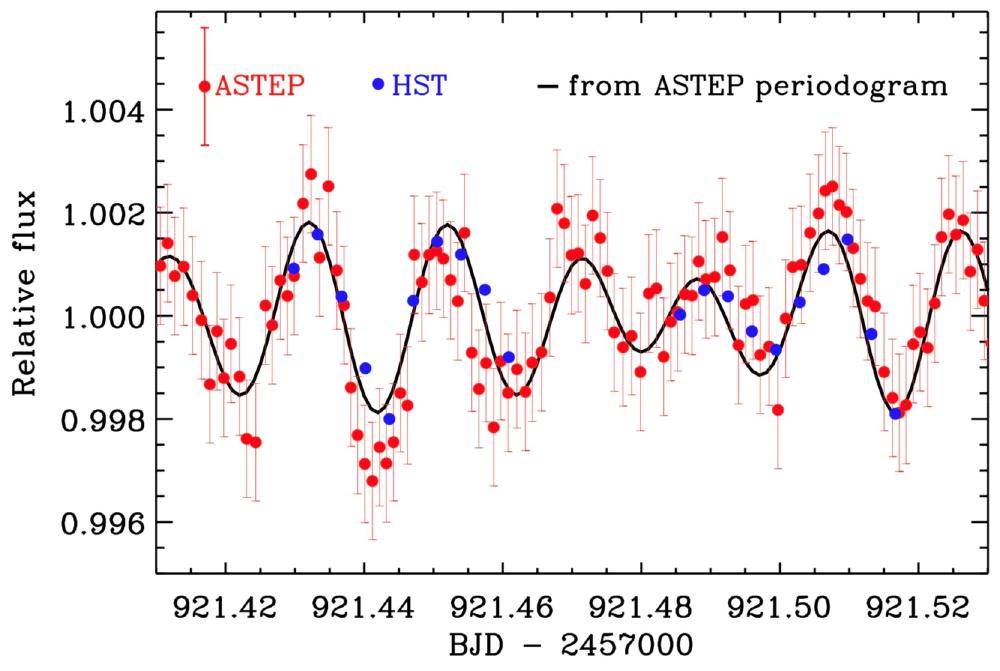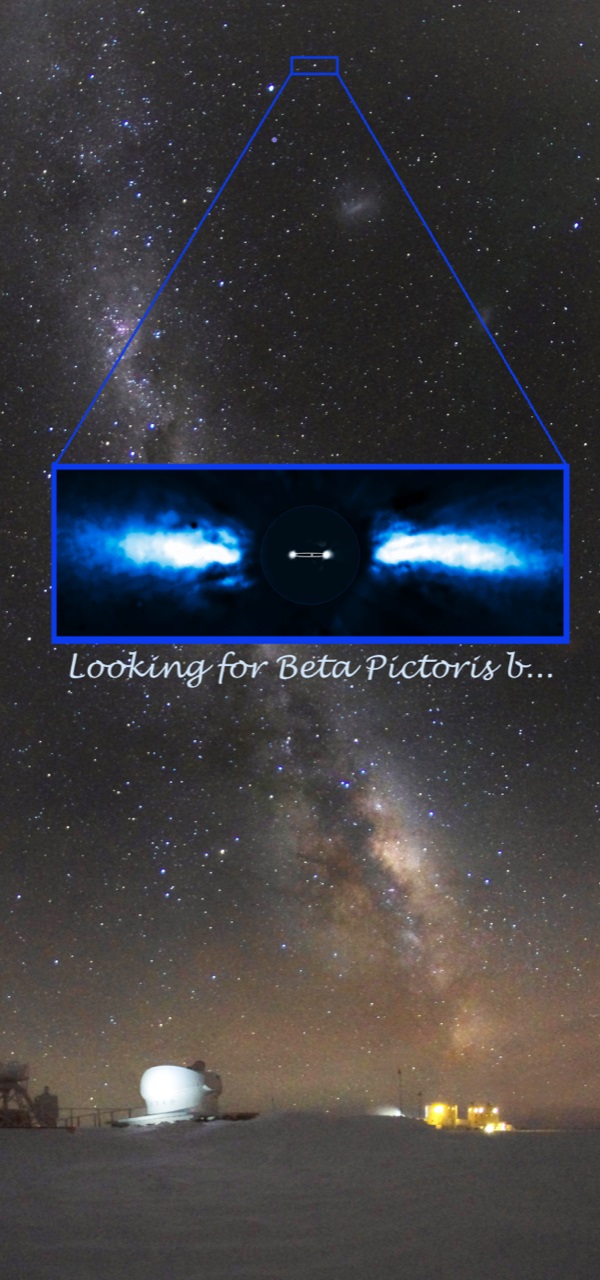Académie d'Excellence "Espace, Environnement, Risques et Résilience"
Observing BetaPic and Exoplanets from Antarctica
Discovery and study of exoplanetary systems with the ASTEP telescope in Antarctica during the polar winter

Academy 3 highlight
The BetaPic project provides unprecedented observations that help us better understand exoplanets and planet formation. It involves a variety of expertise from electronics, operations in extremely cold environments, optics, data analysis and astrophysics.
The project
Exoplanets are planets around stars other than the Sun. Their characterization is one of the major goals of Astronomy, on the quest for Life in the Universe. The French/Italian Concordia base, at 3200m elevation in the middle of the Antarctic continent is a unique vantage point for Astronomy and particularly for the observation of exoplanets. In 2009, our team built ASTEP (Antarctic Search for Transiting Extrasolar Planets), a 40 cm automatic telescope that is able to operate continuously in the extreme southern Antarctic winter, under temperatures that can reach -80°C. The nearly-continuous 3 month-long night represents a considerable advantage to study exoplanets, in particular to examine changes in the light they reflect towards us as they move around their star.
In 2016, our team joined an international campaign to observe an iconic system: the young star Beta Pic. Beta Pic is the first star known to possess both a disk of dust where planets may form, and a planet, called Beta Pic b. The star is also pulsating. In 2017, the planet Beta Pic b passed, for the first time in 18 years, extremely close to its star, enabling the detection of moons or rings, expected in such a system but never detected unambiguously in any exoplanet.

The +
This project has allowed the complete pulsation modes of the Beta Pic star to be observed for the first time, and permitted the discovery of a new planet - called Beta Pic c - in the Beta Pic system.
What’s next?
The ASTEP telescope is pursuing its observations of stars with candidate exoplanets such as those discovered by the NASA TESS space mission. Thanks to the support of Academy 3, the project has been funded by the French polar Agency up to 2022. We will develop new cameras with increased sensitivity that could provide simultaneous observations in the red and in the blue. The system should permit the discovery of small planets around red dwarf stars and characterize these systems more efficiently than ever before.
Project information
|
Scientific domain
Astronomy, Planetary Science Theme
Optical Observations |
Key words
Exoplanets,
Telescopes,
Antarctic
|
|
Total budget
214 k€ including:
20 k€ from Academie 3 |
Students inolved
MEURISSE Geoffroy (M2)
DERSON Etienne (M2)
|
| Partner laboratories
LAGRANGE, UCA
OCA, UCA
IPEV
IPAG, OSUG
University of Birmingham
European Space Agency (ESA)
International collaboration
TRIAUD Amaury, University of Birmingham
CROUZET Nicolas, ESA
KALAS Paul, WANG Jason, Berkeley University
KENWORTHY Matthew, Leiden University
|
Project members
GUILLOT Tristan
MÉKARNIA Djamel
ABE Lyu
AGABI Karim
SCHMIDER François Xavier
|
Project valorization
Publications:
- Mékarnia, D., E. Chapellier, T. Guillot, L. Abe, A. Agabi, Y. De Pra, F.-X. Schmider, K. Zwintz, K. B. Stevenson, J. J. Wang, A.-M. Lagrange, L. Bigot, N. Crouzet, Y. Fanteï-Caujolle, J.-M. Christille, and P. Kalas, The δ Scuti pulsations of β Pictoris as observed by ASTEP from Antarctica. Astronomy and Astrophysics 608, L6 (2017).
- Crouzet, N., E. Chapellier, T. Guillot, D. Mékarnia, A. Agabi, Y. Fanteï-Caujolle, L. Abe, J.-P. Rivet, F.-X. Schmider, F. Fressin, E. Bondoux, Z. Challita, C. Pouzenc, F. Valbousquet, D. Bayliss, S. Bonhomme, J.-B. Daban, C. Gouvret, and A. Blazit, Four winters of photometry with ASTEP South at Dome C, Antarctica. Astronomy and Astrophysics 619, A116 (2018). 10.1051/0004-6361/201732565
- Lagrange, A., Meunier, N., Rubini, P. et al. Evidence for an additional planet in the β Pictoris system. Nat Astron 3, 1135–1142 (2019). https://doi.org/10.1038/s41550-019-0857-1
- Zwintz, K., Reese, D. R., Neiner, C., Pigulski, A., Kuschnig, R., Müllner, M., Zieba, S., Abe, L., Guillot, T., Handler, G., Kenworthy, M., Stuik, R., Moffat, A. F. J., Popowicz, A., Rucinski, S. M., Wade, G. A., Weiss, W. W., Bailey, J. I., Crawford, S., Ireland, M., Lomberg, B., Mamajek, E. E., Mellon, S. N., & Talens, G. J. "Revisiting the pulsational characteristics of the exoplanet host star β Pictoris", Astronomy and Astrophysics, 627, A28 (2019) . https://doi.org/10.1051/0004-6361/201834744




















